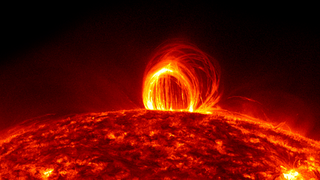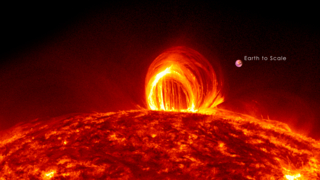Sun
ID: 11047
The sun emitted a moderate solar flare on July 19, 2012, beginning at 1:13 AM EDT and peaking at 1:58 AM. Solar flares are gigantic bursts of radiation that cannot pass through Earth's atmosphere to harm humans on the ground, however, when strong enough, they can disrupt the atmosphere and degrade GPS and communications signals.
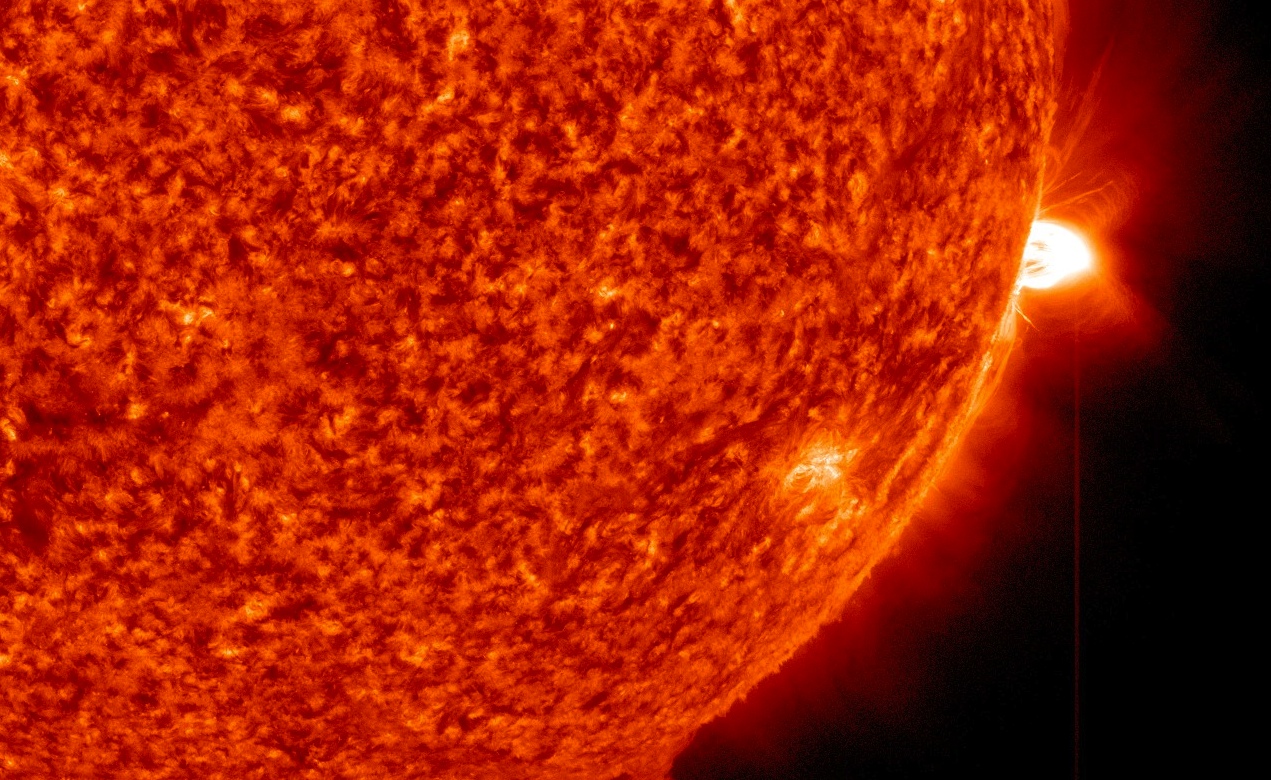
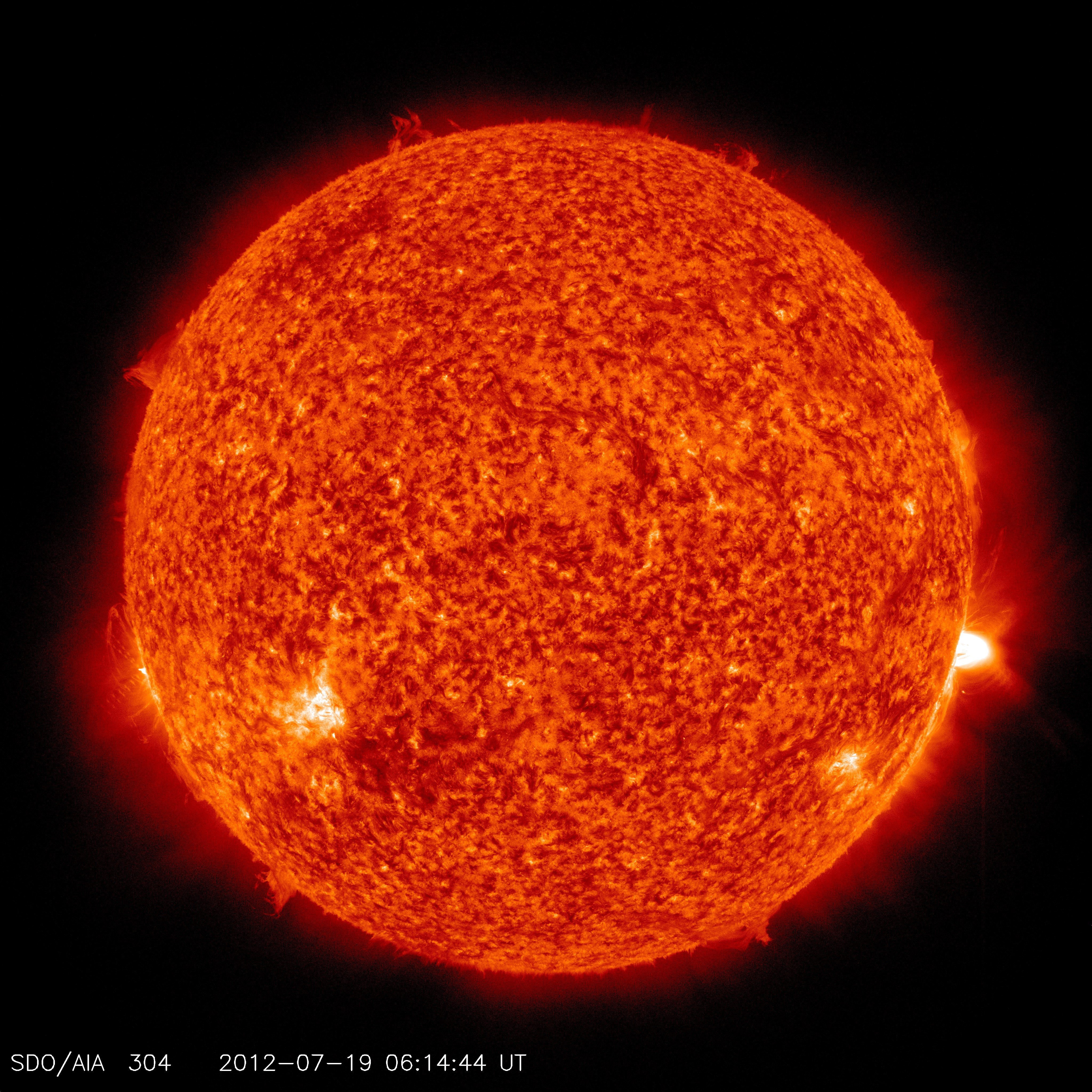


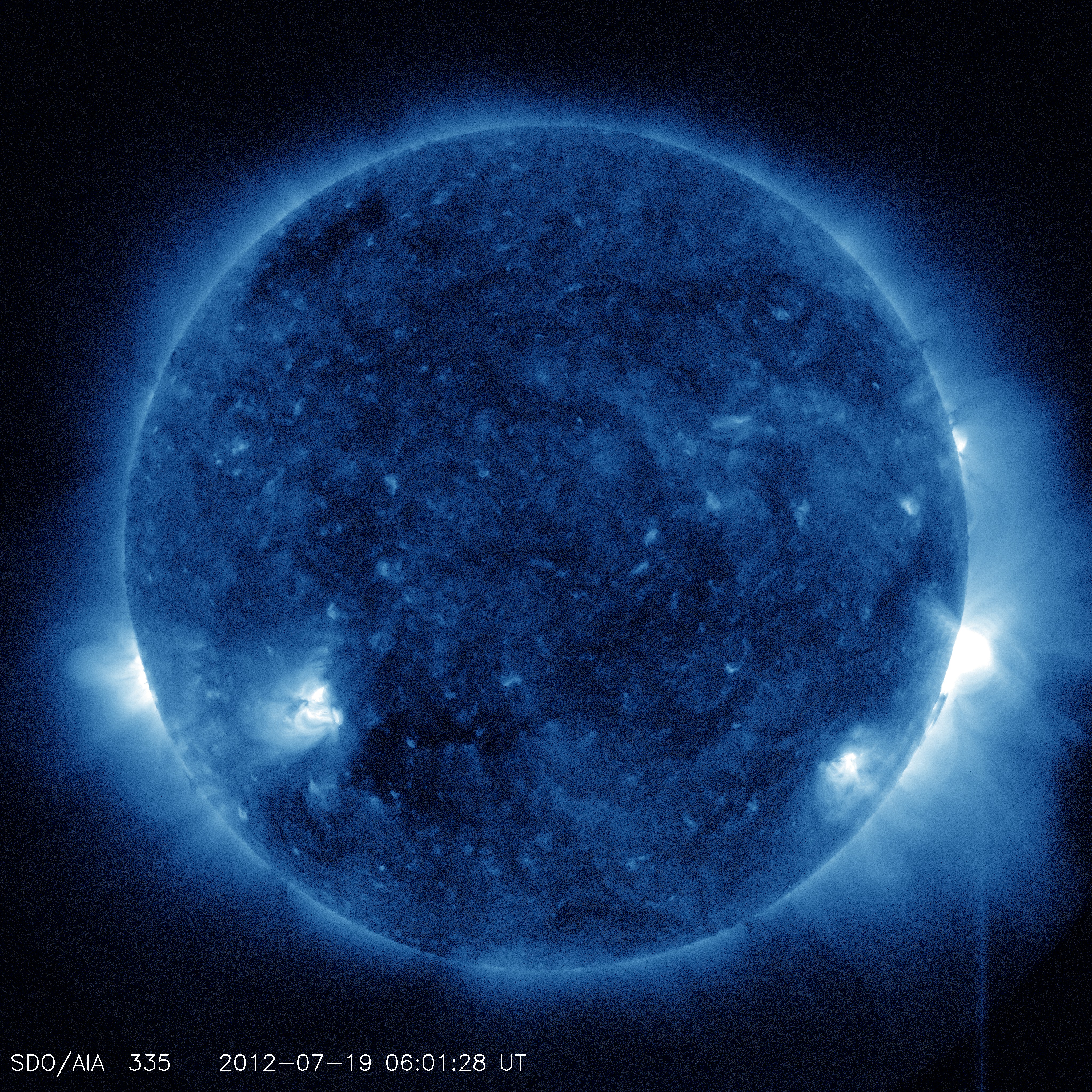
AR1520's Parting Shot: July 19, 2012 M7.7 Flare
The flare is classified as an M7.7 flare. This means it is weaker than the largest flares, which are classified as X-class. M-class flares can cause brief radio communications blackouts at the poles.
Increased numbers of flares are currently quite common, since the sun's standard 11-year activity cycle is ramping up toward solar maximum, which is expected in 2013. It is quite normal for there to be many flares a day during the sun's peak activity.





Related
Credits
Scott Wiessinger (USRA): Video Editor
Scott Wiessinger (USRA): Producer
Karen Fox (ADNET Systems, Inc.): Writer
Scott Wiessinger (USRA): Producer
Karen Fox (ADNET Systems, Inc.): Writer
Please give credit for this item to:
NASA/Goddard Space Flight Center
NASA/Goddard Space Flight Center
Short URL to share this page:
https://svs.gsfc.nasa.gov/11047
Mission:
SDO
This item is part of this series:
Heliophysics Breaking News
Goddard TV Tape:
G2012-048 -- Heliophysics Breaking News 2012 collection
Keywords:
SVS >> HDTV
SVS >> Music
GCMD >> Earth Science >> Sun-earth Interactions
GCMD >> Earth Science >> Sun-earth Interactions >> Solar Activity >> Solar Flares
GCMD >> Earth Science >> Sun-earth Interactions >> Solar Activity >> Solar Ultraviolet
SVS >> Space Weather
SVS >> SDO
SVS >> Edited Feature
SVS >> Solar Dynamics Observatory
SVS >> Heliophysics
SVS >> Corona
NASA Science >> Sun
GCMD keywords can be found on the Internet with the following citation: Olsen, L.M., G. Major, K. Shein, J. Scialdone, S. Ritz, T. Stevens, M. Morahan, A. Aleman, R. Vogel, S. Leicester, H. Weir, M. Meaux, S. Grebas, C.Solomon, M. Holland, T. Northcutt, R. A. Restrepo, R. Bilodeau, 2013. NASA/Global Change Master Directory (GCMD) Earth Science Keywords. Version 8.0.0.0.0
https://svs.gsfc.nasa.gov/11047
Mission:
SDO
This item is part of this series:
Heliophysics Breaking News
Goddard TV Tape:
G2012-048 -- Heliophysics Breaking News 2012 collection
Keywords:
SVS >> HDTV
SVS >> Music
GCMD >> Earth Science >> Sun-earth Interactions
GCMD >> Earth Science >> Sun-earth Interactions >> Solar Activity >> Solar Flares
GCMD >> Earth Science >> Sun-earth Interactions >> Solar Activity >> Solar Ultraviolet
SVS >> Space Weather
SVS >> SDO
SVS >> Edited Feature
SVS >> Solar Dynamics Observatory
SVS >> Heliophysics
SVS >> Corona
NASA Science >> Sun
GCMD keywords can be found on the Internet with the following citation: Olsen, L.M., G. Major, K. Shein, J. Scialdone, S. Ritz, T. Stevens, M. Morahan, A. Aleman, R. Vogel, S. Leicester, H. Weir, M. Meaux, S. Grebas, C.Solomon, M. Holland, T. Northcutt, R. A. Restrepo, R. Bilodeau, 2013. NASA/Global Change Master Directory (GCMD) Earth Science Keywords. Version 8.0.0.0.0
